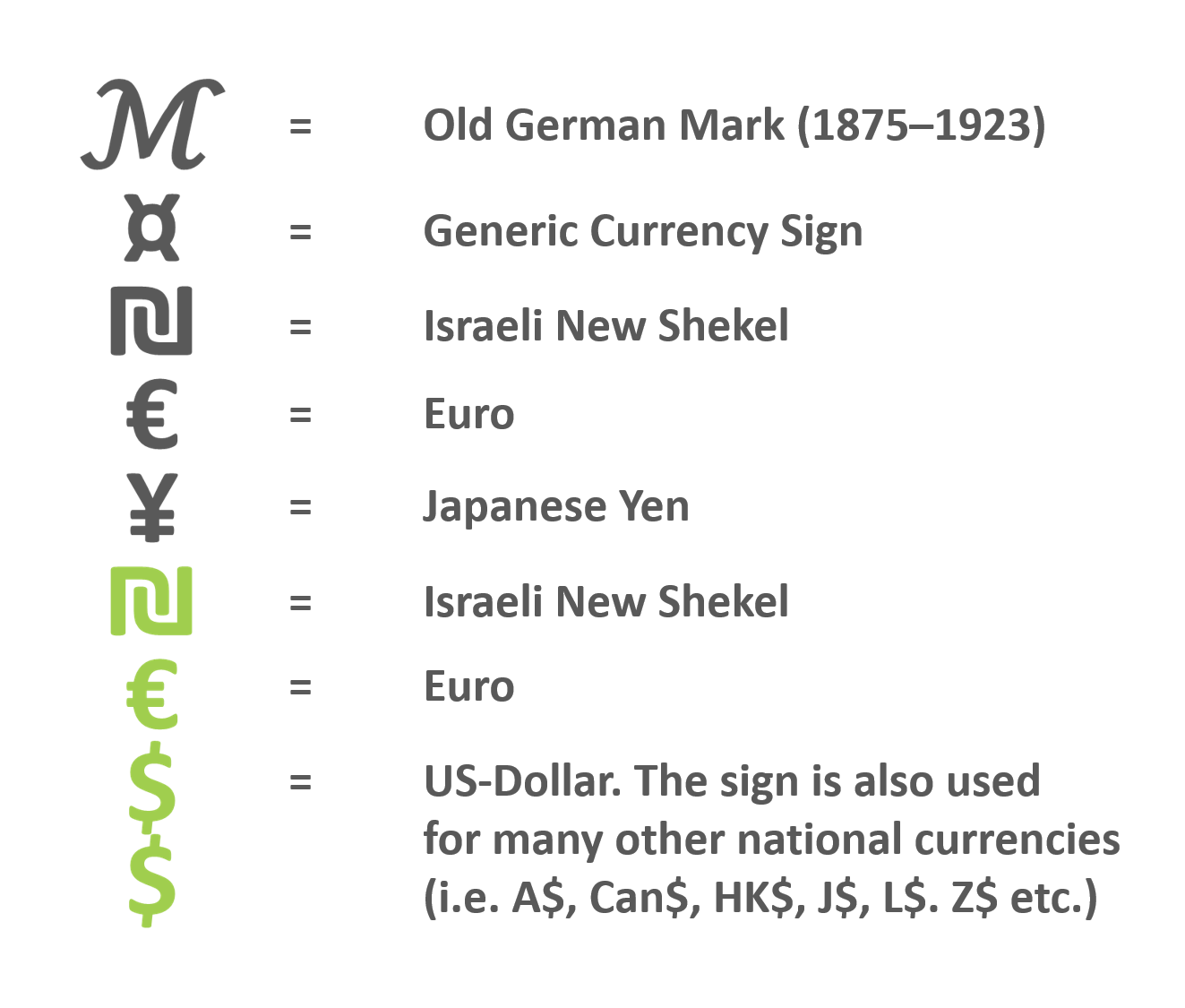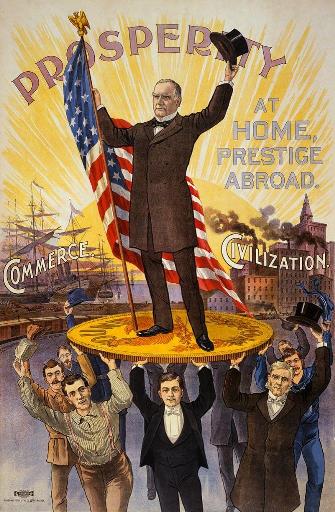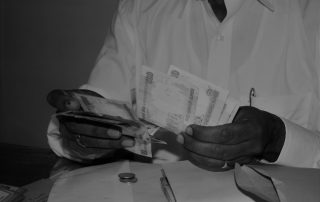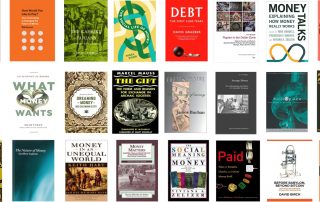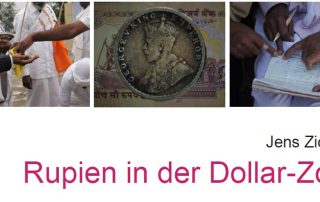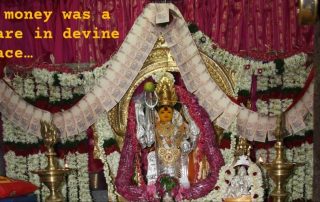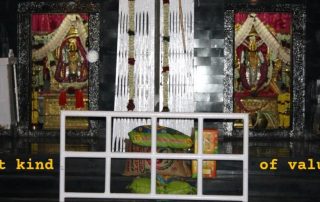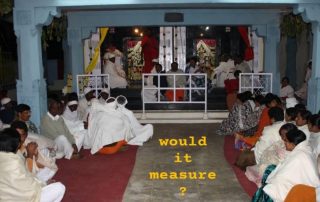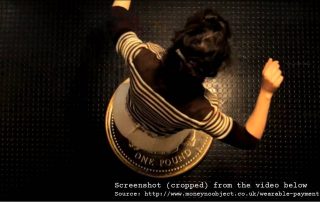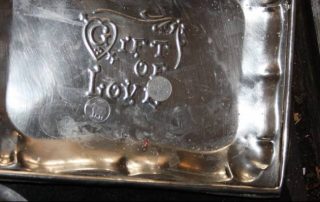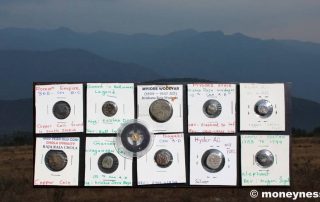MONEYNESS
THE PROPERTY WE SHARE IN THE NAME OF VALUE
Author: Jens Zickgraf (03.01.2019)
get PDF
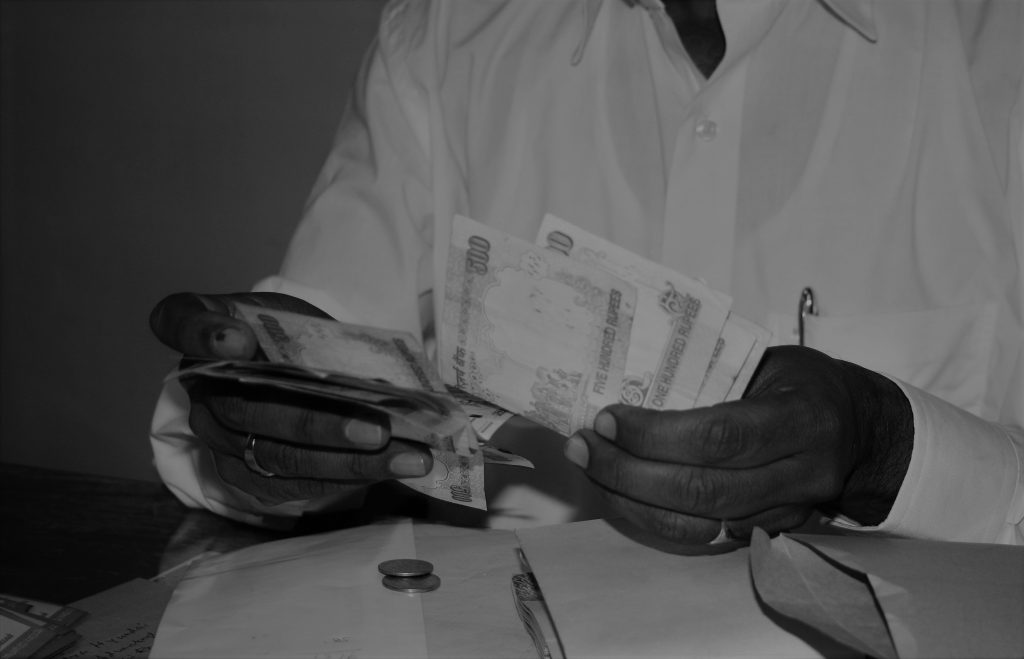
From GIANT CARVED STONES
to THREADED SHELLS
from HOLY COWS to DEAR DEERSKINS and MIGHTY BUCKS
from PLUNDERED BULLION to MINED BITCOINS
from a LABOR-THEORY of value to INGAME SWEATS
from INDIAN SILVER-RUPEES to EURO-DOLLARS
and AFRICAN AIRTIMES
from COPPER PENNIES to ELITE GOLDEN CREDIT CARDS;
or from the KINGS’ CIRICULATED PORTRAITS
to FACEBOOK-LIKES and the TRANSMITTING
GESTURES OF CYBER BODIES
MONEYNESS: THE PROPERTY WE SHARE BY THE NAME OF VALUE
Author: Jens Zickgraf (revised version 16.05.2020)
get PDF
From GIANT CARVED STONES
to THREADED SHELLS
from HOLY COWS to DEAR DEERSKINS and MIGHTY BUCKS
from PLUNDERED BULLION to MINED BITCOINS
from a LABOR-THEORY of value to INGAME SWEATS
from INDIAN SILVER-RUPEES to EURO-DOLLARS
and AFRICAN AIRTIMES
from COPPER PENNIES to ELITE GOLDEN CREDIT CARDS;
or from the KINGS’ CIRICULATED PORTRAITS
to FACEBOOK-LIKES and the TRANSMITTING
GESTURES OF CYBER BODIES
MONEY IS
NOT A SINGULAR PHENOMENON!
NOT A SINGULAR PHENOMENON!
“Value will necessarily be a key issue if we see social worlds not just as a collection of persons and things but rather as a project of mutual creation, as something collectively made and remade … assuming that we do collectively make our world, that we collectively remake it daily, then why is it that we somehow end up creating a world that few of us particularly like, most find unjust, and over which no one feels they have any ultimate control?”
(David Graeber 2013: 222)
[Rest in Peace]
No doubt, the term ‘money’ is confusing. Being current as ‘means of exchange’, money frequently varies in forms, origins, functions, capacities and reach. As ‘store of value’ it oscillates between matter, power, memory and trust. And as ‘unit of account’ it embodies the concepts of number and identity while it lends itself to calculation and speculation. Nevertheless: Don’t we all know that money is money because as ‘standard’, it ought to be fungible? Moreover, isn’t money itself the ‘radical leveler’ (Marx 1958-59: 222) that turns ‘oikos’ to ‘market’ precisely at the expense of making everything impersonal, alienable, comparable and priceable? Hence, don’t we all know that money monetizes – and that all monies (plural) are money (singular) because what they ultimately do is transforming qualitative relations between values into quantitative expressions (cf. Dodd 2005)?
But then: aren’t these features all the more attractive precisely because money permanently works the other way around? Isn’t money – aren’t our everyday monies – the concrete means to invest and express ourselves in worlds we live in? Selves we can’t trade and worlds that we cannot really pay for, but must mutually value and relate?
Like language the great thing about money is that it helps to express and connect our human universe (see Hart 2017). But why indeed should we think of worlds that monetize in ways that value exchange, ownership and (trans)action but frequently ignore money’s qualitative dimensions alongside the unique identities of users and the multiverse of monetary circuits, forms and applications? Why, in other words, should we think of monetary relations – a priori – in terms of abstract (i.e. purely quantitative) value and invisible hands (i.e. anonymous markets created by marginal users)? And why should we treat money as something which can’t change? In fact, I think we really should not – or should not do so predominantly.
The following is a brief summary of what I think is crucial – i.e. why I chose the term ‘moneyness’ as a name for this website and what I mean by it.
Starting to think of monies in more pluralistic, more processual, more contextual, more constitutional, more personal, more relational and more qualitative and indeed more ‘ecological’ terms, I stumbled upon the notion of “moneyness.”
Moneyness has been given a number of meanings – ranging from those who think of money particularly in terms of precious (or ‘scarce’) metals, via theories trying to specify a ‘true nature’ of money regardless of form, contend or situation (see, for example, Ingham 2004) up to the intriguing language of contemporary finance where moneyness is identified with the time-value of derivatives.
In my view it is this latter version which has great conceptual appeal: Hence, in finance, moneyness describes the ‘condition’ of a derivative – namely as being ‘in’, ‘at’, and ‘out’ of the money. It does so by way of relating its strike price (fixed by contract as an option to be exercised up to the expiration date) to its underlying asset (at any current rate) in a given and still developing scenario. In other words, “moneyness describes the intrinsic value of an option in its current state” (INVESTOPEDIA).
It seems clear that moneyness in finance doesn’t indicate anything beyond a potential for monetary profit (or loss). Yet, to me, the intriguing part is that moneyness in finance doesn’t even attempt to define what exactly the money is – it only asserts there being a quality that pertains to the way money may realize as value through a developing set of options!
Hence, what I personally like is the very basic idea of this – i.e. that something which is not presently or not yet fully monetized and which therefore needs not be fully understood as money either, can nevertheless be and become, or and indeed ‘act’ like money: there is always a potential to move further ‘in’ or ‘out’; and irrespective of that this potential may be exchanged here and now. Something (or someone, see below) needs not be precisely ‘at’ the money but can be, can act and may get more or less close to it.
Therefore, as an anthropologist (and amateur trader) I cannot but think of moneyness much broader – namely as valued and relationally weighted properties that pertain to the process and experience of monetization at large, including (in sum) all the phenomena and meanings we associate with money, and indeed including the way in which monies work, but which do not imply coherence for money or monetary value as such. In other words, at any given scenario, moneyness, denotes a potential for getting closer to the money – whatever it is that ‘money’ may actually be or become.
Once again, money integrates our human universe by representing it (and its development, and even its future) both in sum and by the name of value. Money thus obviously remains a riddle of sorts that may never be solved. Moneyness, in contrast, is always made, remade, and located. It is always partial and subject to origin, identity, perception and speculation (or ascription as I put it elsewhere), but within these limits it may also be or become more broadly a shared experience. As quality moneyness thus simply pertains to the ways in which money gets realized!
Of course this is generally obvious from the distinction of the two terms ‘money’ and ‘currency’ – but that’s not exactly (at least not only) what I mean.
Look (!) for instance at coins: Coins still offer the most popular imagery of money and for some time until rather recently they have served as the most popular form of currency in circulation, too. Coins bear meaningful portraits and inscriptions which specify their origin and validity while they circulate as the most tangible (and yet as some would say the most alienable) manifestations of monetary value. Today most coins are made of cheap alloy so that their source of value or authority must be located elsewhere in society (portraits and inscriptions give us a hint). Yet their weighted materiality still serves to represent a whole set of ideas we associate with the purity (symbolic value), durability and scarcity (commodity value) of gold (and silver). More crucially perhaps: unlike pure ideas, symbols or promises, coins and a vast number of other ‘moneyish’ objects can only move in social space by way of being carried around and by physically changing hands – a fact which necessarily constitutes certain forms of closeness among those who transact and which may include the observers of a transaction, too. A coin’s materiality thus shapes proxemics (cf. Hall 1968) between value and valuer (see Zickgraf 2017, 2018). Along with that it shapes imageries, ideas and options for those who use, possess and witness money. Together that’s part of what makes up real-world monetary flows, functions, meanings and – well – monetary “values” and “valuables”; including visions and even sounds of money: For example, look at (or listen to) coins jingling in an offertory bag being passed from one devotee or donor in a church to another – get the feel? – It’s the moneyness (i.e. a qualitative property, relationally weighted) of the very value a coin given represents as money in the concrete situation. Yet it’s more than that: It’s an experience – one of many that coins in circulation can offer. Like a coin given such experience may simply fade away, but it may also turn to memory which may be further generalized as value from the individual to society, and which gives us just another ‘more’ or ‘less’ collective sense of what money can be, represent, do or become.
In turn such possibility and experience may coevolve with other forms of money. The use of cash may both contrast and cross-fertilize with the flow, infrastructure, availability and experience of credit. For instance, if communication technology ads function, speed and different kinds of audience we may embrace the possibility of transacting ‘digital credits’ in real time, staging the flow of such ‘currency’ on different kinds of platforms and under different kinds of audiences; thereby interacting across any physical distance, receiving instant comments, push notifications and even “cashback” in return for payment or registration – and possibly with an app which still plays the jingle of coins on my mobile phone whenever someone sends a tip, pays my wage or offers me a like on facebook. It is not hard to see at all, that materiality, infrastructure, communication and sensation offer qualitatively entangled but fairly different options regarding the way money becomes real.
Yet there are many other ways to think through moneyness as the very concrete properties though which money gets realized. For example, identity of those who transact, or (role) models and stereotypes. One can indeed easily imagine moneyness as a trait (and real-world effect!) of persons: How would you describe the moneyness of Donald Trump? How would you imagine or indeed deal with networks, transactions or even currencies where ‘trumpiness’ is key or charge? Is there another kind of moneyness ‘involved in’ and ‘radiating’ from figures such as Mother Theresa, or innocent Momo and Michael Ende’s Men in Grey, or generous money-goddesses such as Indian Lakshmi or Roman Abundantia? And what’s the moneyness of Winnetou? One might indeed come up with different versions, interpretations, personal anecdotes, emotions and visions. Money may be generally involved in making (and connecting) such distinctions; and both quantity and allocation may be a fairly crucial part in it. Yet moneyness is what we feel, what we know (or believe) and what we value in their specific regard. It is about money being performed, embodied, enacted, sensed, possessed, ascribed and experienced.
I could continue endlessly talking about the moneyness of spaces and places, of people, cultures, of social structures and (monetary) circuits, of buildings, infrastructure and of various forms or types of money – for this endlessness lies in the simple truth that from any given point of departure money offers a potential to make more connections as well as more distinctions. However, once we accept that it is not quantity per se but rather quality (including of course the “quality of quantity” cf. Simmel 2005 [orig. 1900]) which matters in this process (i.e. “monetization”), we can ask (and attempt to answer) very concrete questions, too: What for instance are the dominant imageries, idols, techniques, places, experiences, and characters through which our monetary systems work? And do we like them – when and for what purpose? What drives or backs the value and functions of money if the materiality of money vanishes (and vice versa)? And what adds value to trans*action*? Who issues money and who or what creates which kind of currency? Who or what enables, regulates, necessitates or controls money’s physical presence or its immaterial flow – why, when, where and for whom? What are infrastructures or ecologies of payment (see Maurer 2012, 2015). How can they be designed? What kind of functions may be incorporated? And again, what does it mean for ‘money’? Who has (for instance) access to valuable payment data and how can the latter be monetized? Besides floating exchange rates, what is the difference between Dollars, Euros and Rupees? – Is it purchase power along with being American, European or Indian? Is it culture, or ideology or history, or gods, or industry, or territory, or armed forces or national deficits, or workers, or markets in gold, petroleum and currency futures? Why the hell is the single unit of a dollar (rather than purchasing power parity) deemed eligible to define the global poverty threshold? What kind of values are deemed fundamental to society and are they in line with what money rewards? etc., etc., etc.
Why should moneyness be of any conceptual relevance? – Money is good to think, great to have, good to use, and perfect to speculate with. Yet, inevitably, money contains, transports and creates far more than it can account for! In other words, we may simply do better approaching money with the full specter of our intellectual, cognitive, social and emotional senses – not as a thing as such, not as a singular idea, but as a permanent process of being and becoming like money rooted in between particularization and generalization (see Zickgraf 2017).
In my view, way too much has been raved on money as purely abstract value. Georg Simmel, for example, who otherwise deserves tremendous credit for having explored the question how money resonates with our aesthetic life, regarded money basically as “the most terrible destroyer of form” (2005 [1900]: 274). Of all things, he pointed (masterfully indeed) to an “empirical world” where the quality of money was precisely that “only money is free from any quality and exclusively determined by quantity” (ibid.: 281). Simmel in particular acknowledged at times that pure money in this sense cannot exist, for it was “only striving towards the ideal … which is never attained” (ibid.: 156). Nevertheless, such distant ideal became the starting point of what he and many others (particularly in occidental philosophy) chose to emphasize: Hence that money turns the world into an arithmetic problem – eliminating all personal nuances and tendencies in the process of transaction (ibid 482). As Simmel observed, by the use of money “the most remote comes closer at the price of increasing the distance to what was originally nearer” (ibid.) In a similar manner Max Weber thought of money as the most perfect means of rational orientation – thus serving as the “pervert magical wand” to disenchant the world (see Zelizer 1994: 6f.).
It may be noted that while Simmel and Weber where rather (though not entirely) optimistic about this process, arduous critics of money have frequently hit into the same breach – hence the unruly kind of fertility which money creates for ‘abstract’ or ‘artificial’ value in the sequel of commercial (profit-motivated) transactions and at the expense of natural moral order (Aristotle); the association of money and economy with magic and the devil (see Goethe’s Faust II for a brilliant narration); or the notion of money as a fetish to veil social relations of production and to brand modern capitalism as a socially disembedded system based on making money with money (i.e. m – m’; cf. Marx 1867, Polanyi 1944) – not to speak indeed of the anthropologist’s longstanding preoccupation with “primitive currency” and traditional society as fundamentally opposed to the homogenizing impact of “modern money” (or money-proper, or impersonal money, as some called what they claimed to be uniquely theirs).
Conversely, for most economists from the 18th century way into the late 20th century there was little to say about money’s societal, moral, aesthetic or even ‘magic’ effects. In the ideal model of free market exchange, man was born alike as self-interested homo economics. In this light the ever-growing relevance of money was just the consequential proceed of people’s natural inclination to truck, barter and gain. Hence money as a ‘neutral’ tool to fulfill economic functions only (i.e. unit of account; means and standard of exchange/payment, storage of wealth); and in so far as money was discussed, it was about the question how money can serve these functions best. Well – but even in case the figure of homo economics was nothing but a Faustian homunculus, critics had done most of the persuasive work, claiming (by and large at least) that the “intrinsic power” of money would lead toward the very same result. No wonder then if money seems suspicious of circulating for its own sake. And no wonder there is a realistic danger of ending up with a money which rewards – of all things – the kind of behavior that most people would otherwise identify as inhuman, condemnable, unsustainable or, well, worthless – “of no value”! – Two cheers for old-school capitalism! – and one to Marx for pointing to the fact that (in a growing world system based on control over money) the ruling ideas (about money) must be the ideas of those who rule!
However circular such argument may be, a potential for representing abstract value doesn’t mean that money cannot be designed and redesigned, nor that monetization doesn’t connect and reconnect on multiple origins, paths, forms, values and directions. Hence while money continues to split, rank and compare, money itself has never ceased to change – the empirical worlds of “currency” (past and present) are indeed full of examples. Meanwhile I believe this recreational potential for money is something we ought to address more consciously and more courageously – be it in politics and theory or in practice and innovation
The past decades, of course, have already seen widespread disruption and paradigmatic changes in the theories, politics and practical applications of money (cf. Lagarde 2018). Following the breakdown of the Bretton woods agreement in 1971, financialization, the rise of currency futures, the Euro-experiment and (most significant in my view) new communication technology have altered the physical, spatial, temporal and legal landscapes of currency in circulation (see Swartz 2018; Leyshon and Thrift 1997). Money, it appears (or reappears) for instance more powerfully through ‘wired’ and by now ‘wireless’ linkages of identity with transaction, debt and the flow of data, does not necessarily have to alienate society. It is not only and not sufficiently understood through economic exchange or as a merely quantitative unit of account and comparison. And though it can, its value also needs not necessarily be backed either by scarce materials or by the authority of nation-states. Rather, as a “total social fact” (Mauss 2002 [1923]) and as a common denominator for what people generalize, share and seek to maintain by the name of value, money can and does represent and memorize origins, geographies, networks, deeds, attitudes and (political) community (Hart 2001). In turn, some insiders of the paytech biz (Birch 2014; 2017) go as far as envisioning that identity is just going to replace money in the internet of things and perhaps far beyond (i.e. in an internet of everything – of value!). But at the very least the issuing of currency and, more crucially, the monitoring and control of monetary flows are increasingly subject to a great variety of actors.
After all, the “platform imagery” (Guyer 2016) offers us today another powerful idea how to work with money, value and transaction; and how to see the emerging “components and compositions […] without an implication of […] completeness […] but also without eliminating structure, power, and interdependence” (ibid., p 19). The rise of the digital platform in contemporary ecologies of transaction – though in principle not much different from an ancient Greek agora (cf. Guyer 2017) – clearly breaks up the status of money, payments and investments as stable arbiters of value that circulate through a geography that is everywhere the same (cf. D’Avella 2014:193). In consequence singular conceptions of money are giving “way to plural versions not just of money but of the kinds of society [and identities and networks] that it supports” (Hart 2017: 3, cf. Bandelj et al. 2017).
Importantly, however, this also leaves us with way more choices and way more responsibilities of how we’d actually “like to pay” (Maurer 2015), how we manage our monetary repertoires (ibid., 129f.) and including the question how we ‘can’ and how we ‘want’ to think of money!
To me looking at moneyness thus means to address money not as a transforming agent in the first place but as a chargeable medium, as value-form, and yet – in the sense of formation – as a relational property which pertains neither to the thing as such, nor to any singular idea, but to a continuously monetizing world. Thinking of money in terms of moneyness thus means to look at the emerging “kaleidoscope of possible comparisons and connections” (Brown 2018: 365), including systems of payment and valuation as well as the “choreographies of circulation and interpretation that surround them” (ibid.). Crucially, when seen in this light, monies do rarely appear to represent value as such but valuable origins – hence the fact that people value by the use of money, but also when, where, how, why and under what kind of signature – composite and in fluid compositions.
Whether we look on cash or digits these dimensions don’t manifest predominantly somewhere in theory, ideology and ideal futures, but in everyday life – whenever money is in our hands or minds; whenever money transacts and circulates in our vicinity, that is both in the close and distant orbits of our personality our possessions, networks and positions; and because the use of money never remains without an effect. Money is a medium – yet in some crucial sense it also is a vote (Adam Smith understood this well) – rooted in betwixt and between exchange, identity and experience, between distance and closeness, action and abstraction, freedom and compulsion, and also between materiality, credit and fantasy. The coin, so to speak, continues to relate two sides, (see Hart 1986): It is “tails” (i.e. quantity, units of account) and “heads” (i.e. authority, authentication, culture, memory and what concrete people do when they are in the possession or in need of money). Therefore, one cannot simply put it to one side of the spectrum. Rather money is constantly made from within. It is the product of permanent tensions, not the agent of just one of its poles. Therefore, it is useful to speak not of money (singular), but of monies (plural). And therefore, I think it is also useful to understand moneyness with regard to the ways in which monies are getting realized both as quantities and qualities mixed up from within the intricacies of social and economic life.
—
References
Aristotle. 1994. The Nicomachean Ethics (With an English Translation by H. Rackham). Harvard University Press.
Bandelj, N.; F. F. Wherry und V. A. Zelizer (eds.). 2017. Money Talks: Explaining how Money Really Works. Princeton, Princeton University Press.
Birch, David. 2014. Identity is the New Money. London: London Publishing Partnership.
Birch, David. 2017. Before Babylon, Beyond Bitcoin: From Money That We Understand To Money That Understands Us. London: London Publishing Partnership.
Brown, Laura C. 2018. “Book Review: Paid: Tales of Dongles, Checks, and Other Money Stuff, edited by Bill Maurer and Lana Swartz.” Journal of Cultural Economy, DOI: 10.1080/17530350.2018.1451353.
D’Avella, N. 2014. “Ecologies of Investment: Crisis Histories and Brick Futures in Argentina.” Cul-tural Anthropology 29 (1): 173-199.
Dodd, Nigel. 2005. “Laundering ‘money’: On the need for conceptual clarity within the sociology of money.” European Journal of Sociology 46 (3): 387–411.
Goethe, J.W. von. 1832. Faust. Der Tragödie zweiter Teil.
Guyer, J. 2016. Legacies, Logics, Logistics. Essays in the Anthropology of the Platform Economy. Chicago, University of Chicago Press.
Hall, Edward T. 1968. “Proxemics.” Current Anthropology 9 (2-3): 83-95.
Hart, Keith. 1986. “Heads or tails? Two sides of the coin.” Man 21 (4): 637-56.
Hart, K. 2001. Money in an Unequal world. New York, Texere.
Hart, K. 2017. Money in a Human Economy. New York, Berghahn.
Ingham, Geoffrey. 2004. The nature of money. Cambridge: Polity.
Marx, Karl. (1858-59) 1973. Grundrisse. New York: Vintage.
Marx, Karl. (1867) 1984. Capital. A Critique of Political Economy. New York: International.
Maurer, B. 2012. Payment: Forms and Functions of Value Transfer in Contemporary Society. Cambridge Anthropology 30 (2): 15–35.
Maurer, B. 2015. How Would You Like to Pay? How Technology is Changing the Future of Money. Durham, Duke University Press.
Mauss, M. (1923) 2002. The Gift. The Form and Reason for Exchange in Archaic Societies. London and New York: Routledge.
Lagarde, C. 2018. “Winds of Change: The Case for New Digital Currency.” https://www.imf.org/en/News/Articles/2018/11/13/sp111418-winds-of-change-the-case-for-new-digital-currency (Access: 30.05.2019).
Leyshon, A. and N. Thrift. 1997. Money/Space: Geographies of Monetary Transformation. London and New York, Routledge.
Polanyi, Karl. (1944) 2001. The Great Transformation: The Political and Economic Origins of Our Time. Boston: Beacon.
Simmel, Georg. (1900) 2005. The philosophy of money. Third enlarged edition. Edited by David Frisby.
Translated by Tom Bottomore and David Frisby. London: Routledge.
Swartz, L. 2018. “What Was Bitcoin, What Will It Be? The Techno-Economic Imaginaries of a New Money Technology.” Cultural Studies 32 (4), (https://doi.org/10.1080/09502386.2017.1416420
Zelizer, Viviana. 1994. The Social Meaning of Money. Pin Money, Paychecks, Poor Relief, & Other Currencies. New York: Basic Books.
Zickgraf, Jens M. 2017a. “Becoming like money. Proximity and the social aesthetics of “moneyness”.” Hau: Journal of Ethnographic Theory 7 (1):303-26.
Zickgraf, Jens M. 2018. Die Proxemik der Transaktion: (Bar-)Geldflüsse bei den Badaga. In Soziale Ästhetik, Atmosphäre, Medialität – Beiträge aus der Ethnologie, edited by P. Zehmisch, U. Münster, J. Zickgraf und C. Lang. Münster: Lit.
